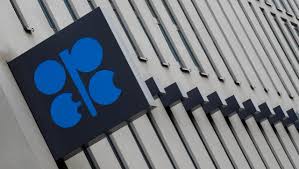The recent decision by the Organisation of the Petroleum Exporting Countries and its allies to increase their oil production quotas and the prospect of higher Iranian output point to a smaller global oil market deficit this year than previously envisaged, Capital Economics has said.
The London-based economic research company said in a report on Wednesday that the persistent deficit meant that “we still expect oil prices to rise in Q2 and Q3 – just not by as much – before starting to slip in the final quarter as OPEC+ production continues to increase.”
The Assistant Commodities Economist at Capital Economics, Samuel Burman, noted that oil prices had jumped up by around 20 per cent since the beginning of the year owing to ongoing global supply restraint and investor optimism about a vaccine-induced rebound in transport-related demand.
He said, “We still expect the release of ‘pent-up’ demand at a time of constrained global supply to deepen the market deficit and increase oil prices in the near future, but recent developments – particularly on the supply side – have convinced us to revise down our mid-year price forecasts.
“OPEC+ production now looks set to rise faster than we had anticipated in the coming months, although it will remain below pre-virus levels.
“It had seemed as though OPEC+ would extend its production cuts into May at its meeting last week, but instead it announced that output quotas would increase by 350,000 bpd in May and June, and by 440,000 bpd in July.”
Burman said the group justified the decision on “improvements in the market supported by global vaccination programmes and stimulus packages in key economies”.
He said, “Beyond July, we think that high prevailing prices will incentivise further rises in OPEC+ production.
“Meanwhile, it seems likely that Iran’s production (which is not subject to OPEC+ production quotas) will grow over the coming months too.”
According to the report, the 25-year cooperation agreement between Iran and China, officially signed at the end of March, provides Iran with a large guaranteed market for its oil.
It said, “What’s more, if the 2015 nuclear accord is revived by the US and other world powers, it would pave the way for sanctions to be lifted and for production to return to pre-sanction levels.
“At the same time, we expect global oil demand to be markedly higher this year compared to last year. We are revising up our forecast of US consumption as the rapid easing of lockdowns and fiscal stimulus are likely to boost transport activity.”
The report, however, said in the near term, strong US demand growth would be partly offset at the global level by downward revision to consumption in the EU and parts of the developing world, owing to the re-imposition of virus-related travel restrictions.
“In sum, we still expect oil prices (Brent) to peak at $75 per barrel in Q3 ($80 previously) on the back of a rebound in global demand. However, steady increases in OPEC+ production will start to clear the market deficit and we still expect prices to fall to $70 by end-2021 and $60 by end-2022,” it added.

 Iran Energy News Oil, Gas, Petrochemical and Energy Field Specialized Channel
Iran Energy News Oil, Gas, Petrochemical and Energy Field Specialized Channel



